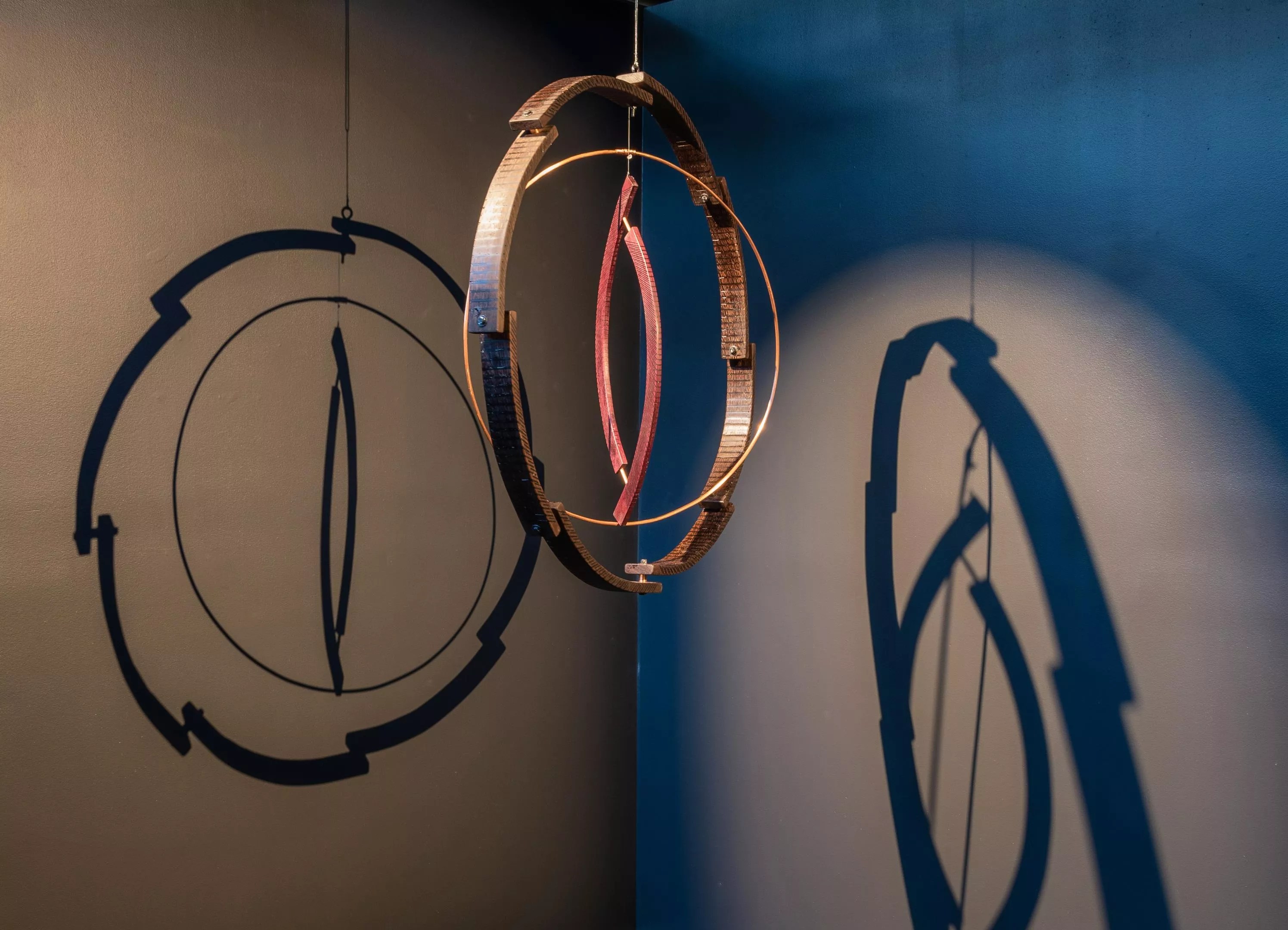
Devin Urioste

Audio By Carbonatix
At RedLine Contemporary Art Center, it’s hard not to notice the industrious working men across the way at 24th and Arapahoe streets. Their yellow safety vests and white hard hats trudge back and forth as they carry long poles on their shoulders to the syncopated beats of incessant hammering inside of what will soon become modernized apartments. Even the traditional red brick of the building is being supplanted by a hip, tan veneer for expected neighborhood newbies. RedLine emerges as a mediating presence for Black artists who feel that their sacred spaces of creativity and culture have been subject to incursion.
Inside RedLine, resident artist Devin Urioste stands alongside his irreverent collage work hanging on the walls of his studio. When it comes to the impact of gentrification in Five Points, “I don’t know how to feel about it,” he says. “I love just walking down Welton Street. I love being in Five Points. I love walking by the Rossonian. I love walking around here. And I’m a part of it. I’m a piece in it.”
Urioste’s work suggests an invitation to meet it where it is, bolstered by his deep background in graffiti writing, hip-hop culture and a human quality that infuses much of it with possibility. He muses on how his unique style fits into the immediate present for Black arts in Five Points and other Black enclaves in Denver. “I’m in a position where I’m doing programming for RiNo Arts District and I’m doing a lot of things in the community,” he says, “and I’m trying to build a bridge and be the human being that’s bringing my real community to come to teach and paint and just participate…despite gentrification here and in other places.”
But despite the obvious shifts in rhythm and beat of the Five Points neighborhood in recent years, Dexter Nelson II, the museum and archive supervisor at Blair-Caldwell African American Research Library, believes Black artists in Five Points are instigating a new movement that refuses to settle in victimhood or invisibility.
“I feel like there is this movement congealing. Maybe some of it is the result of COVID and the feeling of despair during that time, but it feels grounded in the audacity of suggesting, ‘No, we’re going to do things differently this time,'” Nelson suggests. “Whether it’s Jasmine Holmes and her amazing art that tells stories through Southern food and culture, or whether it’s Yazz [Atmore] with her collages or James Dixon with his sculpture work. We could go on and on about these amazing Black artists who are here, who have been here, and whose art speaks to the larger conversation of reclaiming that narrative of what it means to be here.”
Blair-Caldwell has been one of the rare sites in Denver to curate Black artists’ work with such thoughtfulness, intent and purpose; its third floor is a gallery space for a wide-ranging display of some of the most compelling art produced in Colorado. “Blair-Caldwell has always been in the heart of the community. It was the dream of Mayor Wellington Webb to have a Black stronghold in Denver,” Nelson says. “It’s depressing to acknowledge it now, but it was his sense that Five Points would be taken over and would be lost to gentrifying forces. He wanted us to have that last bastion of Black hope, right? That is something we wear on our shoulders and take very seriously.”

“Third Eye Musings” by Autumn T. Thomas.
Autumn T. Thomas
Denver is far from unique in creating pathways for an influx of gentrifiers in neglected areas of majority non-white populations. From San Francisco to Bushwick in Brooklyn, an eerily similar pattern emerges that supplants generations of residents. This reality, unfortunately, has also included artist groups as fierce interlopers.
“I’ve been here seven years now, and to see how Welton Street has shifted the past five years has been fascinating. I used to be able to go there and see a bunch of Black businesses. Certainly not that way now,” muses Holmes, another RedLine resident artist who creates breathtaking installations as well as multimedia work that currently explores how Southern food, the cultivation of land, and lived experiences connect her to her ancestry.
“I don’t know what Denver really wants to accomplish here, but gentrification is clearly in overdrive to the point that the gentrified places don’t even last because they get gentrified as well,” Holmes adds. “It seems like every culture is being taken over in this city.”
Autumn T. Thomas looks up into the upper corner of her crowded studio at RedLine, gazing at her stunning wood sculpture, “Third Eye Musings.” Her abstract sculpting technique turns exotic African hardwood into dynamic curving shapes that mimic the experience of the Black woman. As a Denver-area native, Thomas carries strong feelings about the rapid changes in places like Five Points for Black artists and everyday people in the community.
“Driving down Welton or driving through Whittier or even Park Hill makes my heart hurt,” she says, glancing to her “Third Eye Musings” piece. “The visual of seeing white people driving down the street, walking their dogs, pushing a carriage on Welton is so jarring. I feel like we have been forced out.”
She stares at the floor for a brief moment, considering her purpose.
“All of the work I make is to remind us that we can be more – that we can be better, that we are abstract, and that we can imagine bigger and better than what we are being fed to think of ourselves,” she concludes.